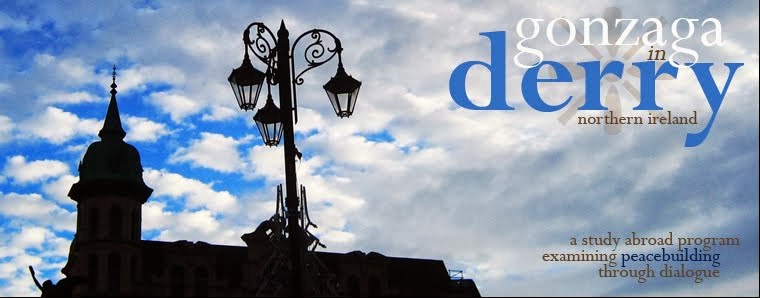Christmas trees and colorful decorations remain bright and festive as Dubliners and foreign visitors to Ireland’s famous capital city pass the pints and sing along with the colorful ‘trad’ band and celebrate the energy of the Irish step dancers as we wind down the last moments of 2013. I’m lucky enough to spend New Year’s Eve with our Aunt Marian and a few moments with our Da, Tommy Doherty, who have come to Dublin to welcome me from Waterford before I head up to Derry. How special.
The evening before, I sat at a small, round, front of stage table amongst die hard socialists, Republicans and folk aficionados, both excited and mesmerized as I watched one of Ireland’s famous folk legends belting out his well-known social and political tunes of equality and solidarity at the famous Vic pub. At 69, Christy Moore, was as solemn, riveting and boisterous as ever whilst over 700 listeners hailed the national musical hero whose lyrics of workers’ rights, emigration, international injustice, and human rights reach deep into each Irish soul. I knew my evening with this former IRA man would be one of my most memorable moments of this trip and would serve as a ‘perfect prelude’ to Derry.
The train up to Derry gave me time to reflect on my Dublin experience and ponder what was to come. The journey took about 4 hours total and was one of the most beautiful I’ve ever taken. As we passed the rolling hills, ditches, small towns and beautiful sea views, I tried to keep an eye out for when (or if) I’d notice a change as we crossed from the Republic into Northern Ireland. Would there be any difference identifying these two politically divided regions? My answer wasn’t long coming. The moment we passed into Northern Ireland, somewhere between Dundalk and Portadown, my first very clear and contentious sign appeared; directly in my line of sight flew a carefully placed Union Jack proudly flying over a brick walled estate not far from the tracks for all the world to see.
 What struck me was not that the well-known flag of Britain marked the territory we were entering, but ‘how’ it was so prominently placed. It flew from a private citizen’s home; a flag that appeared large enough to fly from a government building rather than a private home. With all of the controversy surrounding ‘flags, parades, and the past’ which ultimately prevented the Hass agreement from coming to fruition, this highly controversial symbol of Protestant/Unionist/Loyalist tradition boldly flying in front of me as I glided into the region on tracks set without an official demarcation or border spoke volumes to me. It quickly brought to mind what Christy was singing about in that highly emotional concert in Dublin and what we were to be covering the next week and half. A symbol which spoke of centuries of political dominance by a foreign power and that tears through the hearts of people of a region bloodied through wars and battles of loyalty and defiance. This symbol became more and more prominent as the train progressed further into the region. In some places, entire residential streets were lined with Union Jacks clearly making a statement. The Georgian-style, red-brick homes with English-style back gardens and conservatories also became more prominent. As I passed the peaceful landscape of sheep, seaside towns, and carefully maintained farms, it became clear that I was also entering a highly controversial region where views of peace and beauty for centuries sat, and still sit in contrast to ideologies, religion, and culture. I quickly realized that I was entering a region of identity wars.
What struck me was not that the well-known flag of Britain marked the territory we were entering, but ‘how’ it was so prominently placed. It flew from a private citizen’s home; a flag that appeared large enough to fly from a government building rather than a private home. With all of the controversy surrounding ‘flags, parades, and the past’ which ultimately prevented the Hass agreement from coming to fruition, this highly controversial symbol of Protestant/Unionist/Loyalist tradition boldly flying in front of me as I glided into the region on tracks set without an official demarcation or border spoke volumes to me. It quickly brought to mind what Christy was singing about in that highly emotional concert in Dublin and what we were to be covering the next week and half. A symbol which spoke of centuries of political dominance by a foreign power and that tears through the hearts of people of a region bloodied through wars and battles of loyalty and defiance. This symbol became more and more prominent as the train progressed further into the region. In some places, entire residential streets were lined with Union Jacks clearly making a statement. The Georgian-style, red-brick homes with English-style back gardens and conservatories also became more prominent. As I passed the peaceful landscape of sheep, seaside towns, and carefully maintained farms, it became clear that I was also entering a highly controversial region where views of peace and beauty for centuries sat, and still sit in contrast to ideologies, religion, and culture. I quickly realized that I was entering a region of identity wars. |
| Photo from Google Images |






No comments:
Post a Comment